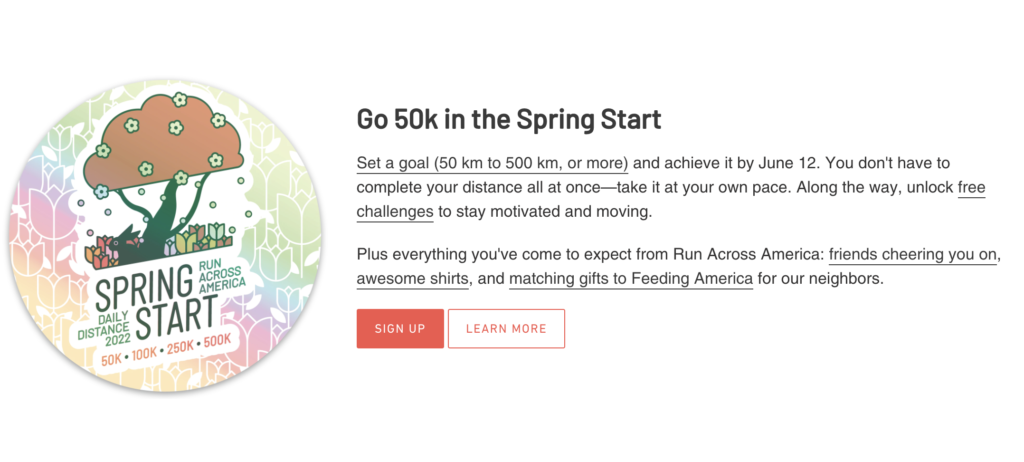Virtual event fundraisers are a key part of many nonprofits’ fundraising strategies. Event attendees can be much more than ticket buyers; they can be nurtured to become recurring donors and ambassadors for your nonprofit.
This article will explore strategies for keeping attendees engaged and retaining them long after your virtual fundraising event.
What Is a Virtual Fundraising Event?
Virtual fundraising events are nonprofit events that are held online and don’t require attendees to gather in person. They have been growing in popularity over the last few years, especially because these events help nonprofits reach new audiences far beyond in-person events.
These events also offer some flexibility for attendees as they can watch the recording, if made available by the nonprofit, after the event is over. In many cases, attendees can participate in the event activities over a long period. For example, a virtual fitness challenge organized by a nonprofit—like a cycling challenge or distance run—can be held at any time that works for participants.

Your nonprofit’s existing donors and supporters can also get involved in your virtual events by becoming peer-to-peer fundraisers and easily promoting your registration or live link with their social networks.
Virtual fundraisers attract more supporters and prospects to your organization in many ways. But when you’ve got the event registration numbers you want, what do you do with them? How do you retain attendees after the virtual fundraiser is over?
Let’s explore five strategies for retaining event attendees.
Download The Post-Event Survey Guide
With this post-event survey guide, you can collect attendee feedback to understand donor engagement and optimize future events.
5 Post-Event Engagement and Retention Strategies for Nonprofits
1. Collect key attendee information before the event
Your nonprofit’s strategy for retaining event attendees and converting them to donors starts with being able to reach them! You should collect key contact information, such as name, address, email, and phone number, before the event because this is when attendees will be most willing to share them. You can also find out about their preferred method of communication, so you know when and how to reach them.
To gather this information, you should use a nonprofit CRM with an event management feature or one that integrates with your preferred event management tool. Doing so will make it easier for you to reach out to them after the event and track the growth of each contact’s relationship with your nonprofit.
2. Create a post-event touchpoint
Timing is everything, so immediately after your event, you should reach out to attendees while the event is still fresh in their minds. This first outreach is an opportunity to thank attendees for being part of your events.
Donors who receive a personalized Thank You letter within 48 hours of donating are four times more likely to give again. We can apply the same logic to event attendees; saying thank you shows them you notice their engagement and appreciate it.
Your Thank You letter can include a recording or an event recap so that registrants can look back on it or share it with others. You can also highlight the event’s impact so far; you could share the total amount of money raised during the event, the number of people who joined your live stream, or the total number of cities or countries represented in your attendance.
Don’t forget to include a call to action (CTA) that encourages attendees to take the next step in their donor journey. You can either do this or simply ask them.
Tip: You can consider saying thank you to attendees over the phone for small events. Virtual events can risk feeling distant, and you can miss the opportunity for personal relationship building. A phone call can add that personal touch.
Download FREE Thank You Letter Templates
Saying “thank you” is a vital part of a nonprofit fundraising strategy. Use these templates to craft general, campaign, and impact-focussed thank you messages.
3. Create a post-event landing page
You should consider creating a landing page that houses your event’s updates, testimonials, impact reports, recordings, etc. This will be helpful down the line as you can refer previous attendees and new prospects to it to show them the progress your nonprofit is making.
4. Reach out later in the year
A few months after the virtual event, you should have another touchpoint with attendees. This is an opportunity to re-engage the attendees. Here are a few ways you can frame the message:
- Share impact: Attendees love to hear about the impact of their efforts! Once your team has had a chance to measure the event’s impact, share it with attendees. Tell a story of the effect the money raised has had on beneficiaries and back this up with data. You can use KIT to track and share your event metrics and impact!
- Invite to similar events: You can provide value to event attendees and engage them by inviting them to similar events that may be of interest.
Give them early access to the next event: If your event is annual (or whenever it returns), invite previous attendees first. Giving them exclusive access to sign up first is a perk to show them you value their attendance.
5. Repurpose content from the event
To get more out of your virtual fundraiser, you can make it a part of your ongoing nonprofit marketing strategy. You could write and share a blog post that summarizes the event, a transcript of the keynote speaker’s presentation, upload the event recording to YouTube, or share testimonials and highlights with attendees and your wider audience.
Virtual fundraising events are a great tool for fundraisers. After all the effort you put into the event itself, you should do everything you can to engage and retain attendees. We hope these strategies have been useful and would love to hear yours in the comments below!

Ally Smith
Content Writer at Fundraising KIT
With a passion for nonprofit innovation, Ally has spent her career helping build community capacity and helping supporting social innovation as a customer success manager turned, youth worker, turned social researcher.
After leaving the tech start-up landscape, she pursued a Master’s in Philanthropy and Nonprofit Leadership and has since supported nonprofits to innovate and grow. A Canadian ex-pat and social entrepreneur based in Edinburgh, she enjoys hiking, baking bread in a panic, and pursuing the full Scottish experience- rain and rugby included!







